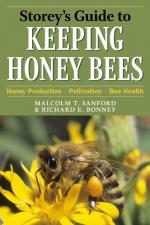|
This section contains 1,665 words (approx. 6 pages at 300 words per page) |

|
Pollination is the process of moving pollen grains, which contain male sex cells, from the anthers (the pollen-containing part of floral stamens, the male reproductive structure) of flowers to the stigma (the glandular female receptive portion) in the pistil (female reproductive organ). When a pollen grain lands on the female part of the flower, the male sex cell joins with the female sex cells in the flower in a process called fertilization to form a seed from which a new plant can grow. The anthers and stigma can be on the same flower (self-pollination) or on different flowers (crosspollination), but must be of the same species. All higher plants, including flowers, herbs, bushes, grasses, conifers, and broad-leaved trees, use pollination for sexual reproduction.
Pollination can be accomplished by abiotic means such as wind and water. Many pollen grains are small (less than 0.05 mm, or 0.002 in). Thus wind can...
|
This section contains 1,665 words (approx. 6 pages at 300 words per page) |

|


